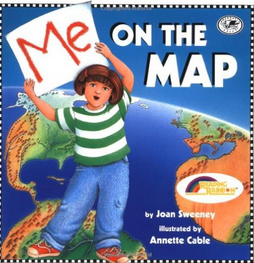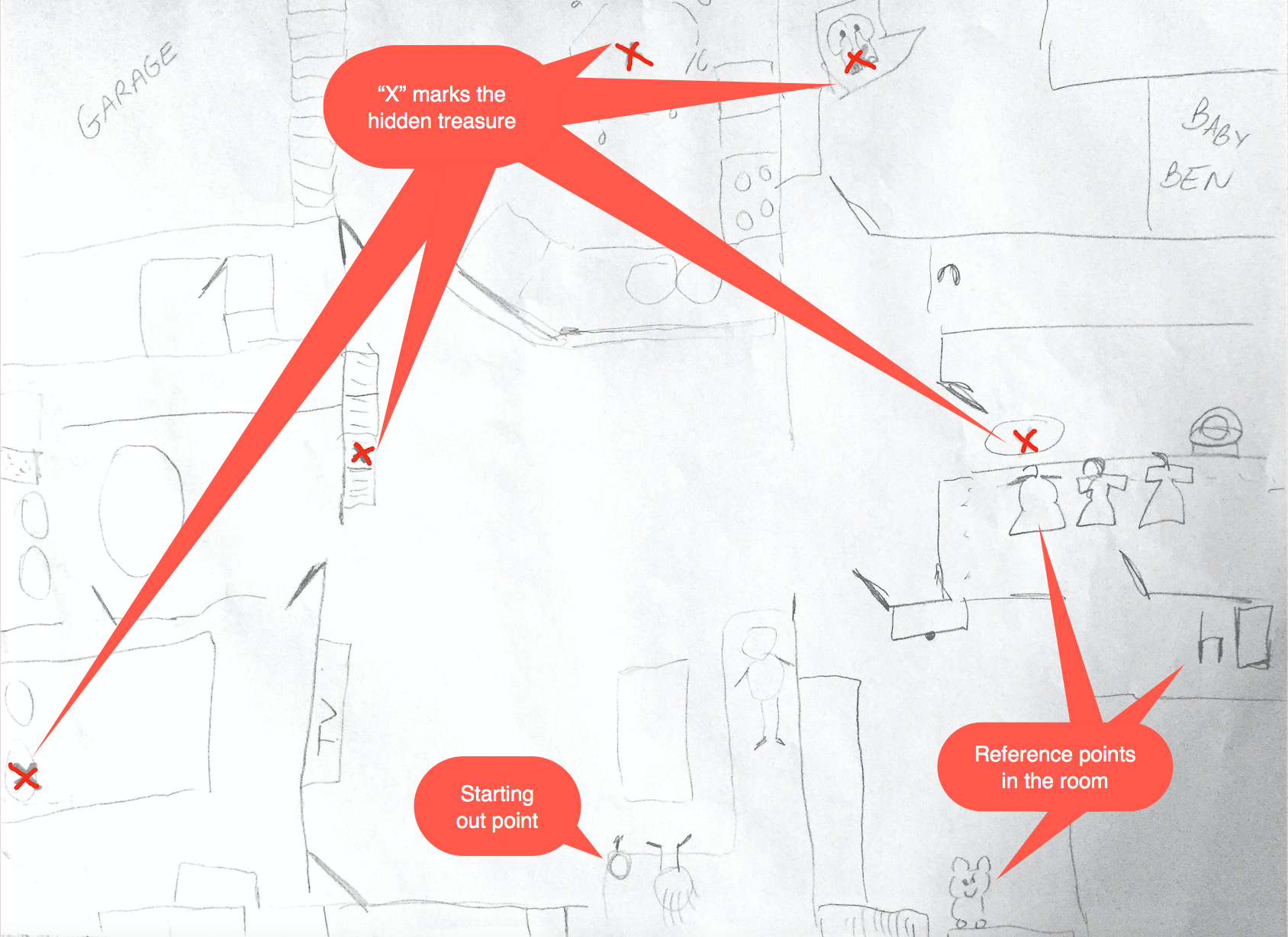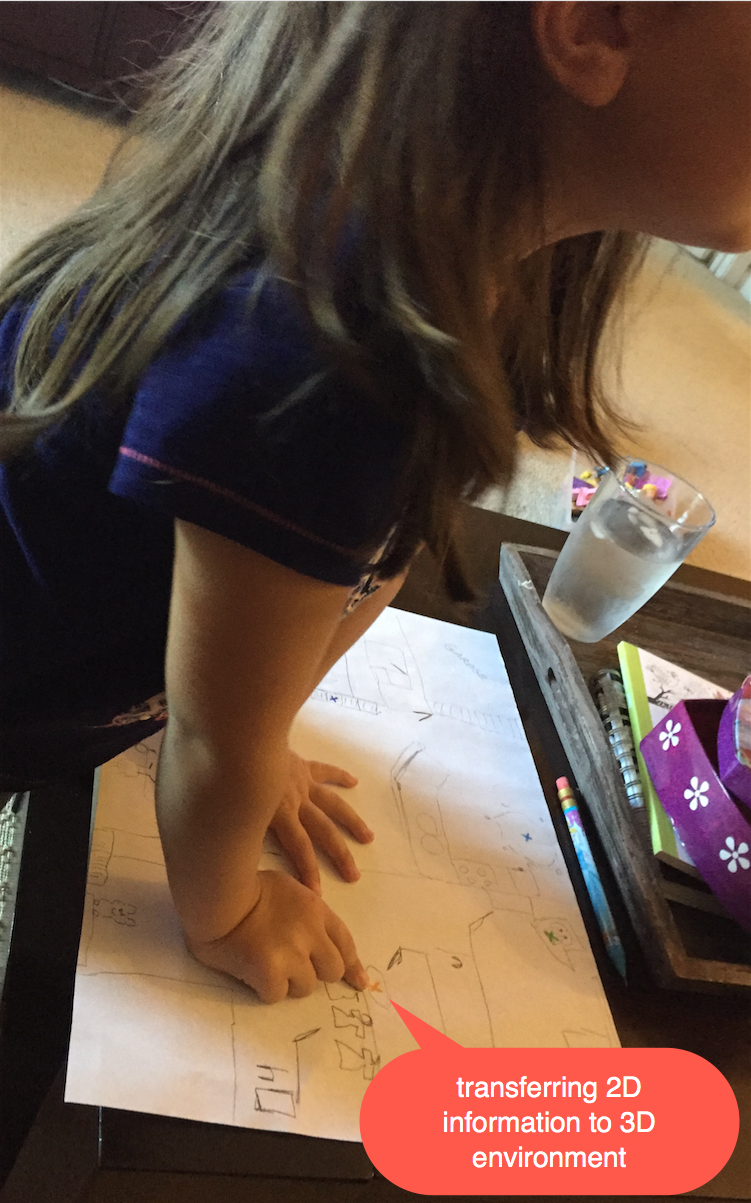Computational Thinking and Learning for Little Ones

Every grandmother dotes on her grandchildren. I am no exception. Over the past four years, I was able to witness my granddaughter Elena’s growth and in particular observe her learning. She has been an integral part of my work around #documenting4learning. There are many things educators can learn from observing learning habits of young children. I even would recommend high school teachers take a moment to visit a pre-school or Kindergarten class to immerse themselves in LOOKING for learning. The environment, the play, the communication will yield a much more visible “laboratory” for educators who are looking to see, hear and document a variety of learning than a traditional high school class, with 25 students sitting at their desks might.
Very early on, I noticed that Elena was interested in patterns and sorting. She was only a few months old when she starting arranging Cheerios on her highchair tray. Later on she arranged flip flops of our family according to size during a visit to the beach. Crayons were also arranged on the table according to color…
Elena is four years old now and recently, I came across a few games that she loves playing with me where her making connections, thinking and learning becomes viisble.
Treasure Hunt in the House

The first one came from a book recommendation on a blog post for Me on the Map by Joan Sweeney. Map skills, spatial skills and the ability to reference and transfer information from a 2D environment (the map) to real life 3D was easily visible for the observer.
We started out by drawing the layout of Elena’s house. As I was illustrating the different rooms, I included her in deciding what types of reference points she wanted included in the map to make sure she recognized the room and specific place within the room. She ran several times to the room to come back with an idea to include (ex. the elephant on the chair in her baby brother’s room or her princess dresses in her closet).
We made sure to include ourselves on the map at the starting point of the “game”. While Elena was covering her eyes, I took one of her toy jewels and hid it somewhere in the house. I returned to mark the location of the treasure on our map. Elena, then uncovered her eyes and studied the map to set out to find the jewel. I also altered the details on the map and little by little increased the degree of difficulty. For example by placing the jewel inside the 2nd basket from the left on a shelf or under the pillow that is closer to the window.
Tools and ideas to transform education. Sign up below.


Robot Coding
Another idea for a game came from Keri-Lee Beasley through her blog post Coding in Grade 1 . I asked Elena, if she knew what a robot was. She didn’t, so we looked at some robots on Google images. I explained to her that robots were machines that needed humans to tell them what to do. Since Elena has been fascinated with the human body and what is under the skin that we can’t see, she knew all about the heart, blood, bones, muscles, nerves and the brain. We talked about how robots don’t have a brain that can tell the muscles/arms/legs/etc. how and when to move.
I folded a big paper sheet and then drew boxes in a row. We discussed a few symbols (arrow pointing up for jumping up, and an “x” for a Jumping Jack) to give the robot direction. We started out with three boxes.
Elena became the “robot” what carried out my directions in the preset sequence. It did not take long to
- duplicate commands (jump twice)
- add new commands and symbols (circle for turning around), arrow facing downwards (squatting down)
- extend 3 commands to five or six commands
- switch who the robot was and who was writing the “code” to make the robot move
Both games engaged Elena intensively. These games were not about technology or computer programming, but to introduce and support her computational thinking.
I was fortunate to hear a keynote presentation last July by Linda Liukas, the author of Hello Ruby: Adventures in Coding
I was so impressed by Linda Liukus, not only for wonderfully bubbly personality, who immediately won the hearts of the audience, but by the message she was sharing.
As a computer programmer herself, she is an advocate for girls in technology. She said:
Little girls don’t know that they are not supposed to like computers.
Her mission is to help us see the world, the way that programmers see the world:
Big problems are only small problems stuck together
Linda was able to paint us a picture about:
- a world that is not ready, meaning not finished being shaped
- technology will play a vital role in shaping that world
- kids can be part of that change
She compared programming to speaking a language and she reminded us that we learn language by USING it, be it programming, poetry, or the language of play.
“If java script is the new lingua franca, we don’t need more grammar classes, we need more poetry classes.” She also challenged the audience to think about ways we could teach algorithms through Art for example? How can you help kids think critically about differences between humans and computers.
Playing with my granddaughter these types of games mentioned above, will help her prepare for other types of languages and thinking that is yet to come for her.
Linda in “Hello Ruby” points out that
kids will learn how to break big problems into small problems, look for patterns, create step-by-step plans and think outside the box.
In addition to a great storyline, the book shares a glossary of terms that describes exactly the types of concepts and dispositions that we can be supporting as we are playing with our pre-school age and younger children/students.
What are some activities we can come up with that support concepts outlined in Linda’s book such as:
- abstraction
- algorithm
- booleans expressions
- collaboration
- data
- data structure
- debug
- decomposition
- functions
- loops
- pattern recognition
- program
- selection
- sequence
- variables
What are you doing to support computational thinking with the little ones?
cross posted at langwitches.org/blog
Silvia Tolisano is a Curriculum21 faculty member, author of the book Digital Storytelling Tools for Educators and founder of the Around the World with 80 Schools project. Read more at http://langwitches.org/blog.
